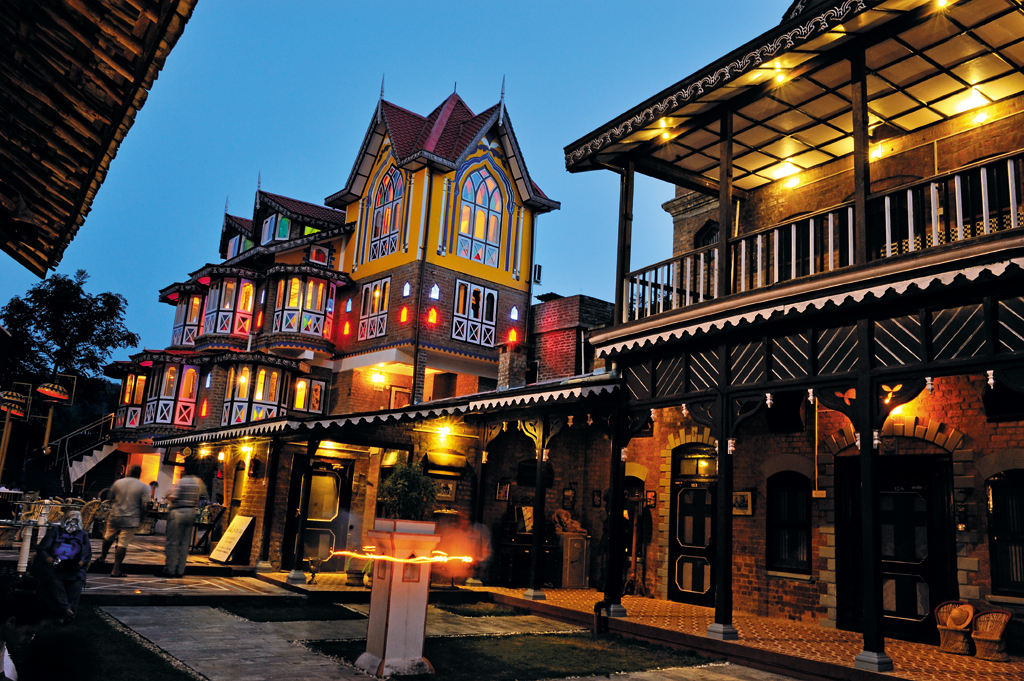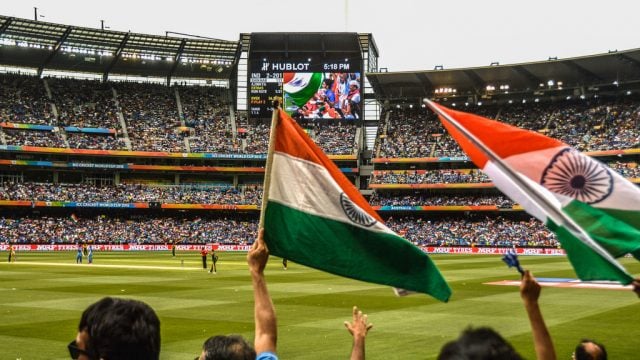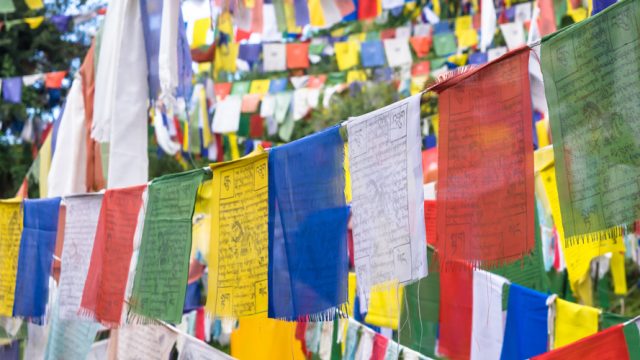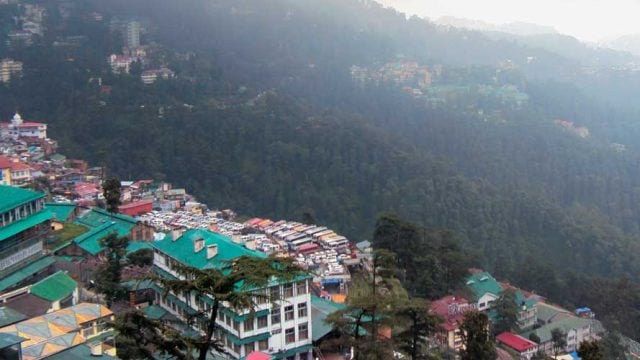Not far from the Dhauladhar range in the Kangra valley, lies a hamlet that is a treasure
Garli was a pioneering village in the late 1800s and early 1900s. Its founding fathers built educational institutions for boys and girls, a women’s hospital, a veterinary hospital as well as infrastructure for sanitation and waterworks.
A walk around Garli is like stepping back in time. Armed with a handy map that details the sights of interest, wander down cool alleys and lanes flanked by thick foliage to discover decrepit two-storied mansions. Even in their state of disrepair it is obvious that they must have been glorious in their day. The Suds travelled extensively during the British Raj, which exposed them to various cultures. From Portuguese and Italian to Islamic and Rajasthani, these heritage homes showcase an amalgamation of architectural styles that will capture anyone with an appreciation for history and art. If houses could speak, these structures would have fascinating tales to tell. Apart from the gabled roofs with slate shingles, which are common to all, the builders of these homes tried to outdo each other. Keep an eye out for unique features like two sentries standing guard on either end of the roof in one house to rose and jharokha windows in others. One structure has elegant brick jaali work. Sadly, most are abandoned, locked up or have caretakers living in them – their owners having moved away for better jobs. Fortunately, this is slowly changing. The descendants of those who built these homes are returning to their ancestors’ village and discovering the potential it holds.

One such person is Yatish Sud, the owner of Chateau Garli, a heritage property now being run as a hotel. Restoring the mansion built by his great grandfather in 1921 was a joint effort undertaken by Yatish, and his children Amish and Tarini. They retained the essence of the original structure, only adding modern amenities to suit travellers of today. They also built a new wing that overlooks the swimming pool. Prepare to be dazzled by the striking red, blue, green and yellow windowpanes in this building, which create a dramatic effect once the sun sets and the lights come on indoors. It reminded me of a grand cathedral with stained-glass windows.
The old house is a treasure trove of items from a bygone era. A gramophone and large wooden radio in the living room brought back memories of my grandfather’s home. Don’t forget to look up as you explore the interiors or you’ll miss the beautiful blue and red Belgian chandeliers hanging from the ceiling. A large copper platter, known as Chamba thal, adorns one wall. It depicts the 10 avatars of Lord Vishnu and was used during religious and cultural ceremonies. A cabinet in a corner contains a set of ivory handled knives engraved with Yatish’s great grandfather’s initials. Notice the door handles in the dining room – they’re shaped like peacocks. Pop into the reception to see the organ and a telephone that looks more like an old accounting machine. Out in the verandah sit a huge hammam that was used to heat water and a food smoker cum heater made from solid Burma teak, along with various other knick-knacks from the past.
If you truly want to experience Himachali cuisine then request the kitchen at Chateau Garli to prepare a dham for you. Dishes with flavours ranging from spicy and sweet to sour and tangy unite on a thali ensuring that you will enjoy every bite. This is also the place to binge on fresh fish. If you’ve been consuming frozen or a day-old fish for years, you’ll be able to tell the difference right away.

Further down the road from Chateau Garli, lies Naurang Yatri Niwas. This striking brick edifice was built in 1922 to serve as a sarai (inn) for travellers. As with several buildings in Garli it fell into neglect after a couple of decades. Thankfully Atul, the grandson of the original owner, and his wife Ira decided to restore it a few years ago. It recently opened its doors to visitors. A wide corridor at the entrance leads onto a sunny central courtyard, around which lie the rooms and common areas. They have taken great pains to ensure everything is spick and span. The rooms are simple yet tastefully furnished and the lounge and dining rooms are comfortable and inviting. The Rang outdoor café adjoining the inn, also run by them, is the perfect place to spend an evening under the stars.
Ira has also been instrumental in reviving the tradition of patchwork in Garli. She’s taught a group of local women the art and together they create bedcovers, table runners and cushion covers, etc., with patchwork. These items are sold in the local crafts shop on the premises of Naurang Yatri Niwas, as well as in exhibitions in Delhi.

A visit to Garli would be incomplete without a day trip to the Kangra Fort and Masroor rock-cut temple. The former is the most magnificent fort I have ever seen. Built atop a hill with a sweeping view of the valley, it’s no wonder that this fort was a much sought after conquest by invaders and other northern kingdoms within the subcontinent. Built around 1500 BCE (when the Bronze Age Civilisation was at it’s peak) by one of the Katoch kings, it is one of India’s oldest forts. Opt for an audio guide during your tour of the fort. Produced by Narrowcasters and narrated by Roshan Seth, whom you may recall was nominated for an Oscar for his role in the film Gandhi, it brings the history of the fort and its inhabitants to life as you walk along the ramparts and explore the ruins. While a good portion of the fort was destroyed in 1905 during an earthquake, luckily one intricately carved wall of the Laxmi Narayan temple within the complex escaped destruction. Remember to wear a cap or hat especially in summer as the sun gets very sharp by mid morning.
It is hard to describe in words the feelings of awe the Masroor rock cut temple evoked in me the first time I saw it. Dated to the 6th– 8th centuries, this series of temples were carved out of huge rocks in the classical Indian architectural style featuring shikharas (towers). Exquisite carvings on the towers and lintels depict gods and goddesses. A large pool in front of the complex reflects the temples, reminiscent of Angkor Wat in Cambodia. Unfortunately several parts of the complex were destroyed in the earthquake of 1905.

Back in Garli, don’t miss out on a night safari. A reserve forest near by is home to several animals including leopard and wild boar. Even if you don’t see anything, driving around in forested hills in the dead of night, never knowing what might appear around the next bend will set your pulse racing. If you’re lucky you might just spot smaller animals in the village. I saw a civet cat walking along a wall one evening! Another thrilling activity is a Beas safari. If the riverbed is dry then your tour guide may just take you for a bumpy drive on it, else picnic on the banks and enjoy a beautiful sunset.
I would have happily spent a few more days in Garli, enjoying the clean air and quite village life. But as the saying goes, all good things must come to an end. I promised myself that I’d return in the near future.
The Information
Getting there
Indigo, Spice Jet, Jet Airways and Vistara fly to Chandigarh, which is 3.5 to 4 hours away from Garli by road. Alternately take the Kalka Shatabdi till Chandigarh and then carry on by road.
Getting around
There is a taxi service run by Rakesh Rana, a resident of Garli. Prior booking is recommended. Rakesh can be contacted at +91 9816363598.
What to see & do
Garli is home to several heritage buildings. Start early in the morning as it can get very hot later in the day. If you’re feeling peckish, check out the local bakery, which offers fresh buns around 7.30am.
The Kangra Fort is 47km away and can easily be covered in a day trip.
The spectacular Masroor rock cut temple complex lies 57km from Garli.
For more information, please see:
www.garli.in; www.chateaugarli.com
Kangra Valley
Garli
heritage





